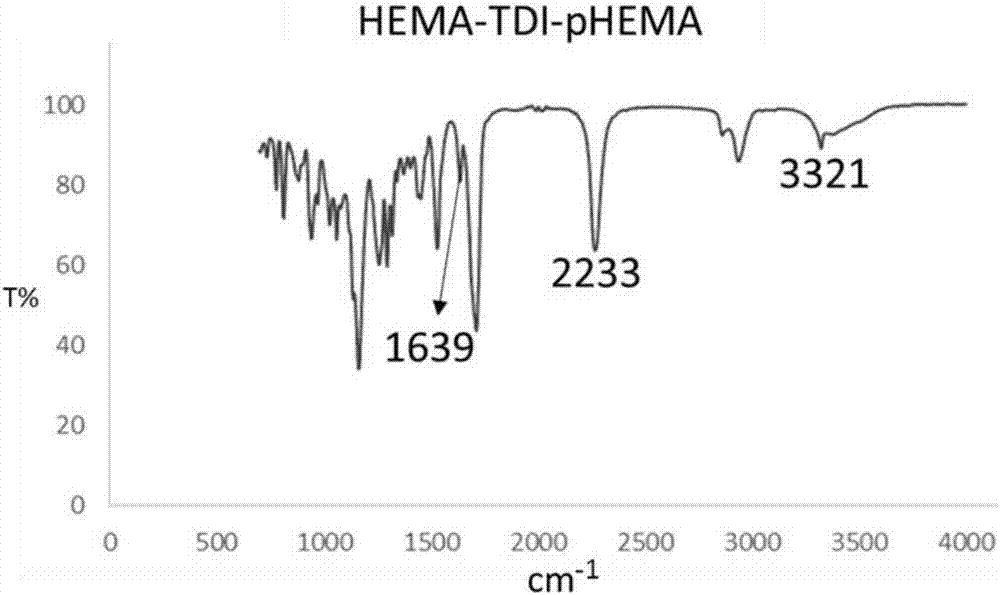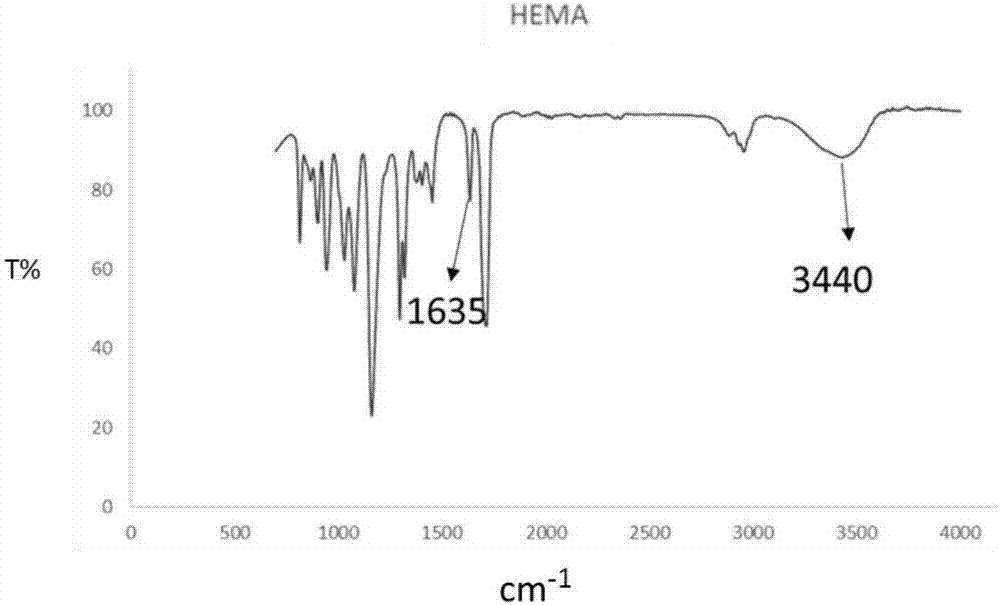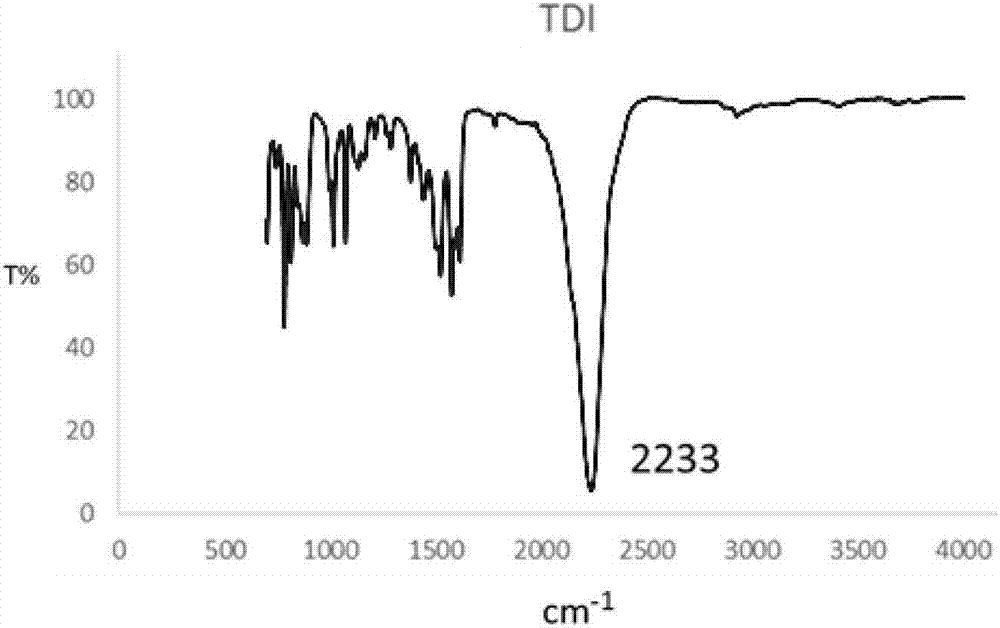Dentin reactive monomer mixture and preparing method, polycarboxylic oligomer and preparing method, and dental composite resin bonding systems
A technology of reactive monomers and mixtures, applied in dental prosthesis, dentistry, dental preparations, etc., can solve problems such as increased water absorption, exacerbated nano-leakage, collagen exposure and degradation, and bonding failure
- Summary
- Abstract
- Description
- Claims
- Application Information
AI Technical Summary
Problems solved by technology
Method used
Image
Examples
Embodiment 1
[0098] Add hexamethylene diisocyanate (HDI) and hydroxyethyl methacrylate (HEMA) at a ratio of 1:2 to a dry three-necked round-bottomed flask. The reaction system is stirred by a magnetic stirrer. The three-necked flask Connect the condensing pipe to the top, connect the dryer to the top of the condensing pipe, and connect the thermometer to the three-necked flask. The reaction system is heated at a constant temperature of 50°C, and the acetone solution of zinc naphthenate, which is a catalyst with a mass ratio of 0.5%, is added, and the di-n-butylamine hydrochloride method is used. Detect the isocyanate value of the system, and stop the reaction when the isocyanate value is close to zero. Bismethacryloxyethyl carbamate hexamethylene HEMA-HDI-HEMA was prepared. Refrigerate and store away from light.
Embodiment 2
[0100] The molar ratio of HDI to HEMA substance is 1:1. HDI was first added to the round bottom flask, HEMA was added drop by drop using a constant pressure dropping funnel, the rest of the reaction conditions were the same as in Example 1, and the reaction was stopped when the isocyanate value remained constant. Prepare monomethacryloyloxyethyl carbamate hexamethylene isocyanate HEMA-HDI, refrigerate, seal in a desiccator, and store in the dark.
Embodiment 3
[0102] The molar ratio of HDI to HEMA is 3:4; react and process according to the method described in Example 1 to obtain a photocurable dentin-reactive monomer mixture: HEMA-HDI-pHEMA is HEMA-HDI-HEMA, HEMA -HDI, a mixture of trace amounts of HDI, refrigerated, sealed in a desiccator, and stored away from light.
[0103] The obtained monomer mixture HEMA-TDI-pHEMA was characterized by attenuated total reflection infrared, and the obtained results are shown in Figure 1 ~ Figure 3 middle.
[0104] figure 1 It is the infrared spectrogram of the photocurable dentin reactive monomer mixture HEMA-TDI-pHEMA, which still retains the C=C characteristic absorption peak of HEMA at 1635 wavenumbers (compared with figure 2 ), the infrared absorption of isocyanate-NCO at 2233 wavenumbers is greatly reduced (compared to image 3 ), the primary hydroxyl absorption peak of HEMA disappears at the original 3440 wavenumber (compared to figure 2 ), and form a new absorption peak at wavenumb...
PUM
 Login to View More
Login to View More Abstract
Description
Claims
Application Information
 Login to View More
Login to View More - R&D
- Intellectual Property
- Life Sciences
- Materials
- Tech Scout
- Unparalleled Data Quality
- Higher Quality Content
- 60% Fewer Hallucinations
Browse by: Latest US Patents, China's latest patents, Technical Efficacy Thesaurus, Application Domain, Technology Topic, Popular Technical Reports.
© 2025 PatSnap. All rights reserved.Legal|Privacy policy|Modern Slavery Act Transparency Statement|Sitemap|About US| Contact US: help@patsnap.com



